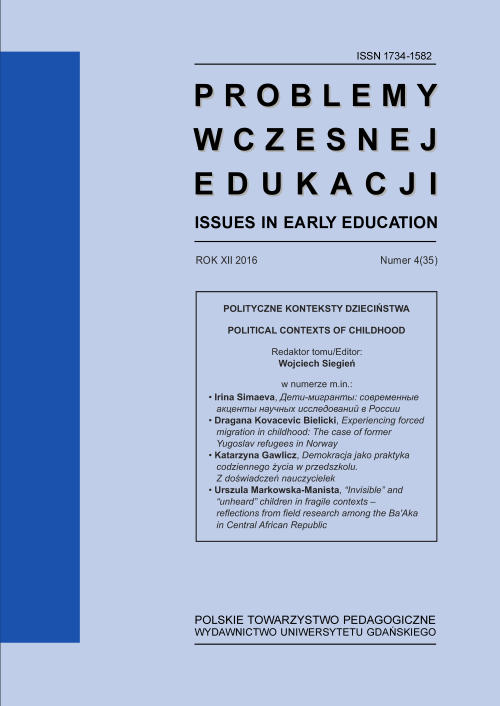Strategie pomocy dzieciom ulicy w Jaipurze. Studium przypadku organizacji I-India
Słowa kluczowe:
dzieci ulicy, Indie, programy naprawcze, sierocińceAbstrakt
This study examined the efforts to provide vocational training programmes for abused, orphaned, and destitute children in the capital of Rajasthan. The presented results are the effect of the larger project on illiteracy conducted by the author in India in 20121. Harmful traditional practices like child labour, child marriage, the caste system, discrimination against girl children impact negatively on children and increase their vulnerability to abuse and neglect. I-India is a fully registered, nonprofit, non-governmental organisation. It was established in 1993 and employs a staff of eighty dedicated local people. I-India’s main activities are the provision of: an information/advice help-line for children in need, repatriation of children to their families, temporary and permanent homes, medical care and sanitation, nutrition, emotional support from trained staff, education, vocational training, awareness, and advocacy.
Downloads
Bibliografia
Aptekar L. (1992), Are Colombian Street Children Neglected? „The Contributions of Ethnographic and Ethnohistorical Approaches to the Study of Children Anthropology and Education Quarterly” 22 (4). http://www.sjsu.edu/faculty/laptekar/download/anthroanded.pdf, 12.01.2014.
Aptekar, L. (1994), Street children in the developing world: a review of their condition. „Cross-Cultural Resources”, 28,196. http://www.sjsu.edu/faculty/laptekar/download/crossculturalresearch.pdf, 12.01.2014.
Chatterjee A. (1992), India: The forgotten children of the cities. UNICEF, Italy.
Kacker L. (2007), Study on Child Abuse: INDIA. Ministry of Women and Child Development, Government of India.
Kombarakaran F.A. (2004), Street children of Bombay: their stresses and strategies of coping. „Children and Youth Services Review”, 26. http://www.sciencedirect.com/science/article/pii/S0190740904000544, 12.01.2014.
Nussbaum M. (2000), Women and Human Development. The Capabilities Approach. Cambridge, Cambridge University Press.
UNICEF (2012), The State of The World’s Children 2011. http://www.unicef.org/sowc2011/pdfs/ SOWC-2011-Main-Report_EN_02092011.pdf, 12.01.2014.
http://ladli.org/ 12.01.2014.
http://www.i-indiaonline.com/ 12.01.2014

 Uniwersyteckie Czasopisma Naukowe
Uniwersyteckie Czasopisma Naukowe





